Fix: Windows 7 Stuck on Checking for Updates
Windows 7 Update getting stuck on “Checking for Updates” sometimes followed by error 0x80070057 is a common update issue. The error occurs usually during the Windows Update. Windows 7 users who are facing this issue can’t seem to download the updates. The Windows Update either won’t start or will get stuck at some point during the downloading. The Windows Update can be stuck for several hours because of this issue.
There are a wide range of things that can cause this to occur. It might happen because you aren’t allowed to download Windows Update or it might be because of Windows update settings not being configured correctly. Issues with administrative rights or an infection might also be the reason.
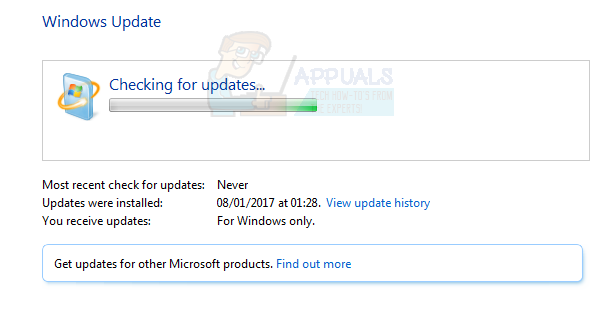
Method 1: Downloading Windows Updates
- Press Windows key once and click Control Panel.
- Click Categories and select Small Icons
- Select Windows Update
- Select Change Settings
- Select Never check for updates (not recommended) from the drop down list under Important Updates
- Click Ok and restart your computer

Go here and download the KB3020369 and install it. Do not worry about having this update already on your computer. If you have already installed it then you won’t be able to install it again. Download the KB3020369, somewhere where you can find it, for your Windows version and run the downloaded file.
The installer will detect if you already have the update installed or not. Once it is installed or says you already have it, restart your computer.
Now go here and download the KB3172605. Follow the same procedure for KB3172605 as you did above. Once it is installed, restart your PC.
Do the following once the PC is restarted.
- Press Windows key once and click Control Panel.
- Click Categories and select Small Icons
- Select Windows Update
- Click Check for Updates
Now wait for the system to check, download and install the updates.
Method 2: Windows Catalogue
For this method to work, you need to use Internet Explorer. This method will NOT work if done from any browser other than Internet Explorer. You will use Internet Explorer to select the two updates that you need to solve the issue and download them.
- Press Windows key once and click Control Panel.
- Click Categories and select Small Icons
- Select Windows Update
- Select Change Settings
- Select Never check for updates (not recommended) from the drop down list under Important Updates
- Click Ok and restart your computer
Now open Internet Explorer (Click Start then click Internet Explorer) and paste this link https://catalog.update.microsoft.com/home.aspx in the address bar (located on the top mid). If Internet Explorer is not your default browser then don’t just click and open the link because that won’t work. Copy and paste the link in the Internet Explorer.
- Type KB3020369 in the search bar of Windows Catalogue and press Enter
- Click the Add button in front of the Make sure you select the correct bit format (32 or 64) for your Windows. X64 package is for the 64-bit and x86 package is for the 32-bit Windows.
- You should be able to see that the item is added to your basket.
- Now type KB3172605 in the search bar of Windows Catalogue and press Enter
- Repeat step 2 for the KB3172605 as well. Now you should have 2 items in the basket
- Click View Basket
- Click Download
- Click Desktop (or any other place where you want to download the files) then click Ok
Once the download is finished, go to the Desktop (or where you downloaded the files) and double-click KB3020369 installer. The installer will check whether you have already installed the KB3020369 or not. Once it is done, restart the system. This is necessary for the update to take effect.
Now go to the Desktop (or where you downloaded the files) and double-click the KB3172605 installer. Restart your computer once the installer is finished.
Do the following once the PC is restarted.
- Press Windows key once and click Control Panel.
- Click Categories and select Small Icons
- Select Windows Update
- Click Check for Updates
Wait for the updates to finish. This should solve the problem.
Reminder
Once you are done with the updates, you can revert back to the old settings in Control Panel. You can also keep the settings if you don’t want the system to automatically check for updates. If you are keeping the “Never check for updates (not recommended)” option then don’t forget to check for updates manually. You should check for updates at least once a month especially after the second Tuesday of every month since Microsoft tend to release updates at that time.
Method 3: Reset Update Components
In this method we will manually restart the BITS, Cryptographic, MSI Installer and the Windows Update Services and rename the SoftwareDistribution and Catroot2 folders which definitely solves the problem.
- Hold Windows Key and press X (release Windows Key). Click Command Prompt (Admin)
- Type net stop wuauserv and press Enter
- Type net stop cryptSvc and press Enter
- Type net stop bits and press Enter
- Type net stop msiserver and press Enter
- Type ren C:\Windows\SoftwareDistribution SoftwareDistribution.old and press Enter
- Type ren C:\Windows\System32\catroot2 Catroot2.old and press Enter
- Type net start wuauserv and press Enter
- Type net start cryptSvc and press Enter
- Type net start bits and press Enter
- Type net start msiserver and press Enter
- Close the Command Prompt
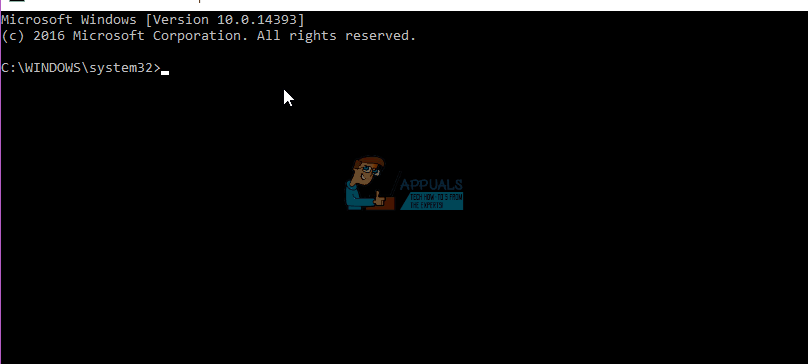
Method 4: Changing DNS server Settings
Changing the DNS server settings also solves the Windows Update problem. The steps for changing the DNS server settings are given below
- Hold Windows key and press R
- Type ncpa.cpl and press Enter

- Right click the connection that you want to change the settings of and select Properties
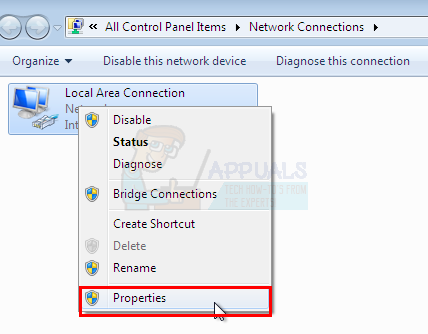
- Select the Networking tab if it isn’t selected already
- Select Internet Protocol Version 4 (TCP/IPv4) or Internet Protocol Version 6 (TCP/IPv6)
- Click Properties
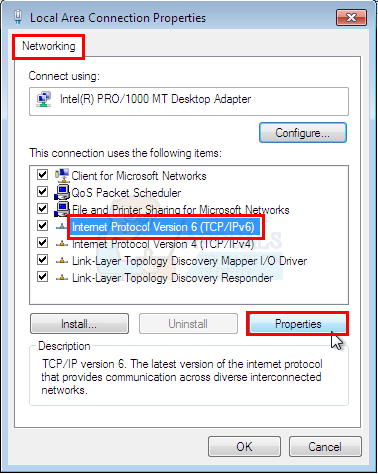
- Click Advanced button
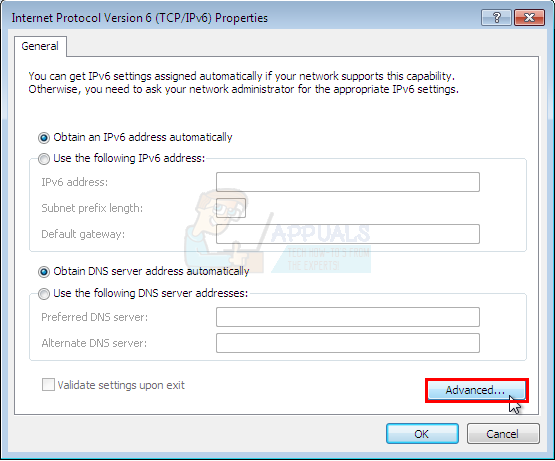
- Select the DNS tab
- Select the DNS entry in the section DNS server address, in order of use. Note them down somewhere for future reference
- Select Remove to remove the old DNS entry
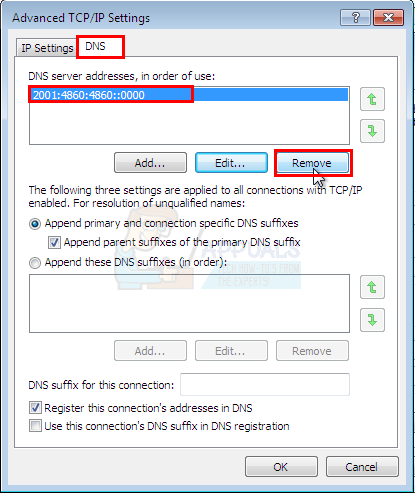
- Now click Add button
- Type 8.8.8 or 8.8.4.4 if you selected IPv4 in step 5
- Type 2001:4860:4860::8888 or 2001:4860:4860::8844 if you selected IPv6 in step 5
- Click Add then select Ok
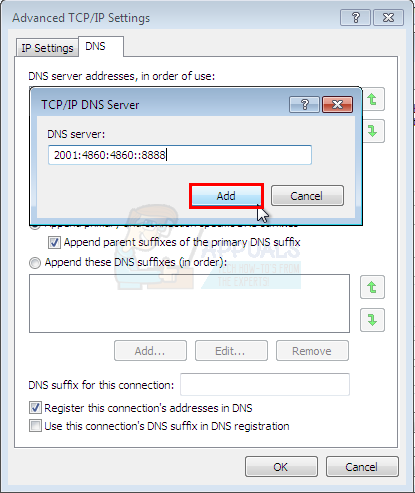
Now check for Windows updates and see if the problem is solved or not. If your problem is still there or the problem is solved but you want to change the DNS settings back to what they were before, just follow the above given steps and enter the old DNS values on step 11/12.